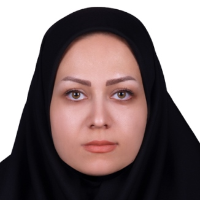Investigation of ethnopharmacology and diversity in yield components and phytochemical characteristics of some species of the genus Viola (Viola spp.) in the habitats of northern Iran
Author(s):
Article Type:
Research/Original Article (دارای رتبه معتبر)
Abstract:
In this research, in order to investigate the ethnopharmacological diversity, yield components and phytochemical characteristics of Viola species (Viola spp.) from 16 habitats in the north and northwest of Iran (Golestan, Mazandaran, Ardabil, East Azarbaijan and Kermanshah provinces), a research based on a completely Randomization was done with three replications. Ethnopharmacology information was obtained from local people and plant samples were collected from the mentioned habitats in the spring of 2018 at the time of flowering. At the same time, the samples of each barium were collected and prepared for identification at the species level and receiving the code. Soil samples were also taken from a depth of 0-30 for physical and chemical analysis, and the geographic coordinates and height were also recorded. The yield components and phytochemical characteristics (including chlorophyll a, b and total, carotenoid by spectrophotometer, total phenol by Folin-Siocatio colorimetric method, total flavonoid by aluminum-chloride colorimetric method, antioxidant compounds by ABTS and DPPH methods) of the collected samples were measured. As a result of the botanical investigation, it was found that 16 collected masses were related to five different species including V.odorata L., V.alba, V.suavis, V.sieheana and V.ignobilis. Ethnopharmacological results showed that in most regions this plant is called by the name of violet or something similar and it is used in the treatment of viral diseases such as colds. The analysis of the results showed that the characteristics of the habitat had a significant effect on all the components of the measured performance and phytochemical traits, so that the amount of chlorophyll and the dry weight of the aerial parts of the samples increased with the increase in the organic matter and nutrients of the soil. Also, with the increase in altitude, the amount of antioxidant compounds by ABTS and DPPH methods, phenolic and flavonoidic compounds increased in aerial parts, and the results of principal component analysis (PCA) also confirmed the obtained results. In the clustering that was done based on the two factors of yield and phytochemical components, it was found that the cluster decomposition for phytochemical characteristics was divided into 14 categories and for yield components into 9 categories at 0.2 Euclidean distance. The results of cluster analysis also showed that the climatic and edaphic characteristics of the habitat have a great effect on the yield components and phytochemical characteristics of the violet plant, which can determine the appropriate cultivation pattern.
Keywords:
Language:
Persian
Published:
ECO phytochemistry of medicinal plants, Volume:11 Issue: 3, 2023
Pages:
44 to 66
https://www.magiran.com/p2658198
سامانه نویسندگان
مقالات دیگری از این نویسنده (گان)
-
Comparison of Some Growth and Morphological Traits and Nutrients Contents of Two Basil Accessions Influenced by Different Growth Media Under Hydroponic and Aquaponic Systems
S. Yonesi, Kh. Hemmati*, P. Moradi, S. Khorasaninejad
Journal of Soil and Plant Interactions, -
Leaf micromorphology of some Viola spp. from Iran (resent)
Mahideh Habibi Kaleibar, *, Mostafa Ebadi Nahari, Ghasem Karimzadeh, Mohsen Farhadpour, Christian Gruber
Journal of Applied Biology,



